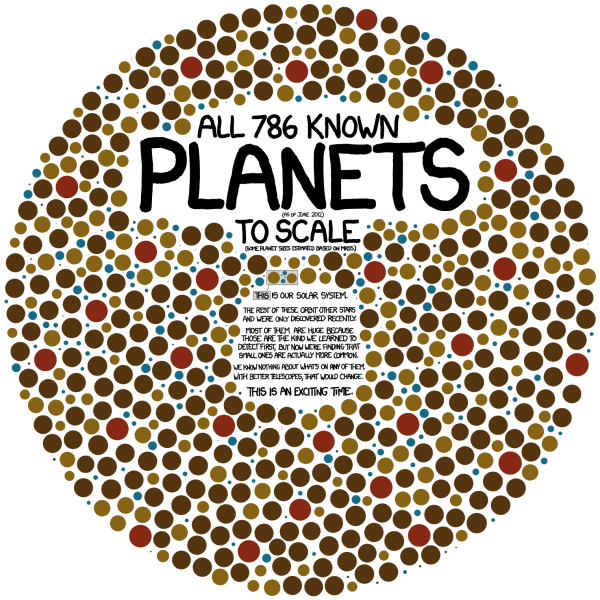Exoplanets: 786 Known Planets
Exoplanets is a great infographic that tells one story really well by focusing on one data visualization for the whole story. Randall Munroe at xkcd.com occasionally mixes in some great data visualizations and infographic designs with his comics.
All 786 known planets (as of June 2012) to scale (some planet sizes estimated based on mass).
[Our solar system planets are shown in the middle]
The rest of these orbit other stars and were only discovered recently. Most of them are huge because those are the kind we learned to detect first, but now we’re finding that small ones are actually more common. We know nothing about what’s on any of them. With better telescopes, that would change. This is an exciting time.
This visual is so powerful. You could write in text that we have found 786 extra-solar planet, but the visual helps the reader wrap their head around the scale of that large number and adds the size of the planets as a second level of information.
It’s also a clean design that focuses on communicating the scale of how many planets we have found, and doesn’t try to add all of the other information we know like which stars they orbit, what are their names, when were they discovered, which telescope found them, and who was the team or individual that discovered each one. Just because we have more information doesn’t mean it should all be included in the infographic. The story is cleaner and easier to understand without the clutter of too much information.
Cudos to Randall!









 Randy
Randy

Reader Comments (2)